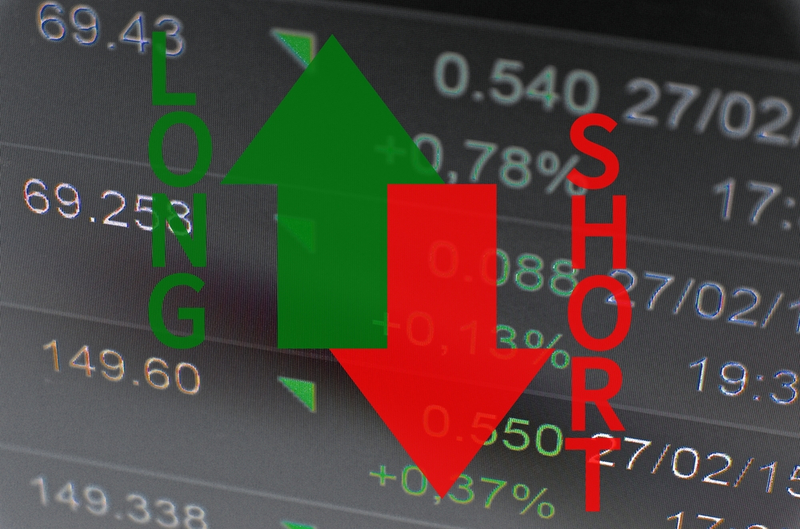If you’ve just been testing the waters with trading so far, you might be ready to get a bit more complicated and start thinking about both sides of a stock.
These are stocks–and, after all, they go down as well as up–and traders can move with them, as long as they understand which side they want to be on and why. That is the art of going long or short.
Table of Contents
Short Stock Vs Long Stock?

Long positions and short positions both can be used to hedge or speculate. But, although going long is more common, more advanced traders will consider the riskier and more complicated short option as well.
Download a PDF version of this post as PDF.
Serious investors always try to cover all of the bases, sometimes even by going long and short on the same security. The trick is to efficiently combine both tactics based on the current market situation.
But, before you attempt to give up your traditional long positions to dabble in the short-side of things, there are quite a few basic things that you need to know about buying and selling, or the reverse: selling and buying.
Buy-Sell
 When taking a long position, an investor buys a security in the expectation that it will increase in value.
When taking a long position, an investor buys a security in the expectation that it will increase in value.
The investor then monitors the security’s performance and when the price increases to a desired level, he or she closes his or her position by selling the security at a profit.
The investor’s profit potential on a long position is said to be unlimited, because theoretically, there is no limit to how much a stock price can increase.
A profitable long transaction is by all means the desired scenario. But, what if the security’s price turns to drop instead?
A stock price can fall to extremely low levels, but it never turns negative. A stock can never go lower than $0.
Consequently, the most an investor can potentially lose is the amount invested. Specifically, with regard to day-trading, price falls can force a trader to quickly close long positions in an attempt to minimize losses.
Note that investors who practice a buy-and-hold investment strategy hold securities for an extended period of time and usually won’t be concerned about short-term price fluctuations.
Here, the goal is to profit on the security in the long run.
StocksToTrade—now better than ever! We ushered in the New Year with some major advancements that include 3 unique features, exclusive to our platform.
Sell-Buy

With short transactions, this concept is reversed. In a short position, an investor borrows a security in the expectation that it will decrease in value.
Borrowing implies the security is not owned by the investor and must be returned to the broker. In the interim, the investor will try to maximize profits.
The rationale behind short selling is that once the price falls, the investor buys the borrowed security back at a lower price and returns it to the broker.
The profit/loss generated from a short sale is the spread between the prices at which the investor initially sells and afterwards buys the security.
The preferred scenario involves a significant drop in the security’s price, but the gain potential is limited:
The most an investor can gain is the amount for which he sold the security. This would only happen if the price falls to zero, which rarely happens.
If the price increases, investors often close their short positions as soon as possible in order to minimize losses. As there is no limit to how high a price can go, the loss potential on a short position is said to be unlimited.
Costs

While the only cost a trader undertakes when buying a security is its actual value, borrowing comes with additional costs. In addition to the usual trading commissions, an investor going short is responsible for paying margin interest to a broker for the right to borrow a security.
The longer the investor holds onto a security, the more interest will accumulate in the margin account.
This will substantially impact the investor’s net profit. In addition to margin interest, difficult-to-borrow stocks also carry a ‘difficult-to-borrow’ fee.
The fee rate fluctuates and usually is known for having a high impact on the profitability of a short trade.
Dividends and Additional Benefits
When an investor buys a security, the investor becomes its true owner for as long as the security remains in their portfolio.
While holding a stock, the investor is entitled to its dividend payouts–if applicable–and potential benefits, such as bonus share issues.
When an investor borrows a security, there is no true ownership.
Therefore, when an investor closes a short position, the broker must be paid back any dividends and/or additional benefits received along the way.
Duration

Although there is no time limit on how long a short or long position can be held, price fluctuations require well-timed actions.
Some factors, such as the broker’s allowable length of borrowing, the margin account balance, or de-listing of borrowed stocks, may influence the time limit on a short position.
In day trading, traders do not hold short positions longer than a day– sometimes only few minutes or hours.
The same is often true for long positions–at least for day traders, but it’s not uncommon for even a day trader to hold a stock longer than a day, waiting for just the right moment to exit.
Risks
A short position is higher in risk than a long position. While there is only one risk involved in buying first–to lose the initial investment–in short selling we should be aware, at least, of the following four factors:
#1 Skewed Payoff Ratio
Although there is no limit to how much an investor can potentially lose on a short position, the maximum gain is the price at which the stock is shorted. This is known as skewed payoff ratio.
#2 Total Recall
The broker retains the right to recall/demand the borrowed security at any time and without notice. Subject to margin calls, any trader’s short position could be liquidated at any time, regardless of its implications of the return–or lack thereof.
The reason behind a margin call could be as simple as that the shares are no longer available for borrowing–known as buy-ins.
#3 Short Squeeze
A short squeeze is a phenomenon when investors trigger a rise in price on a heavily shorted stock. Investors trigger a short squeeze by extensively closing short positions and creating high buying volume.
The reason behind this is usually their common belief that a stock will become unprofitable. The opposite of the short squeeze is the less common long squeeze, which will lead to further decline in a security’s price.
#4 Regulator Restrictions
Regulators may sometimes impose restrictions on short transactions, causing short-sold stocks to rise in price and triggering investor losses.
Short-selling is not for the beginning trader. Before you try your hand at short-selling, you’ll need to do a fair amount of homework and develop a clear strategy and exit plan.
Short-selling isn’t for everyone and it’s hard to find stocks to short sell, because the amount of research it takes to find the right one means that by the time you do, you’ve often missed the boat.
Please also read our Infographic on Short-Selling here. Also worth reading, Short-Selling Restrictions and Why You Should Care
Check out STT’s new Twitter Streams! One of our most important new releases of 2017 is the inclusion of Twitter as a source of data for keeping up to date with the latest social discussions on a given stock. Every stock tab includes a Twitter data feed which focuses only on tweets mentioning the company being tracked.
